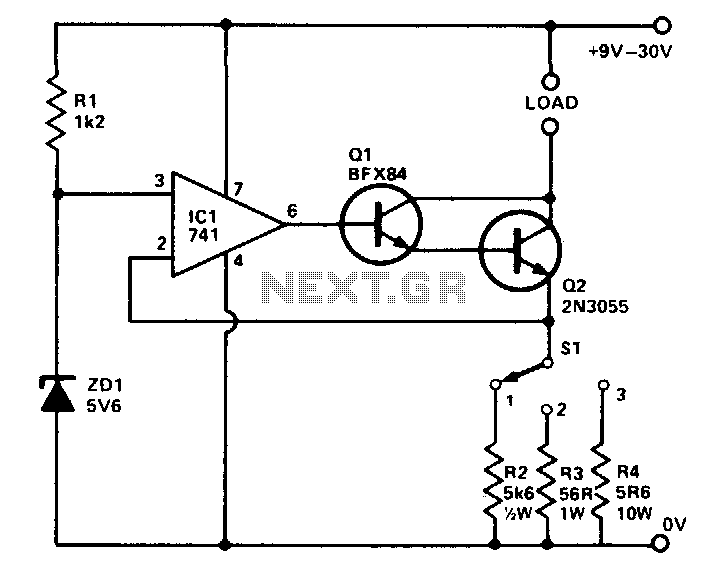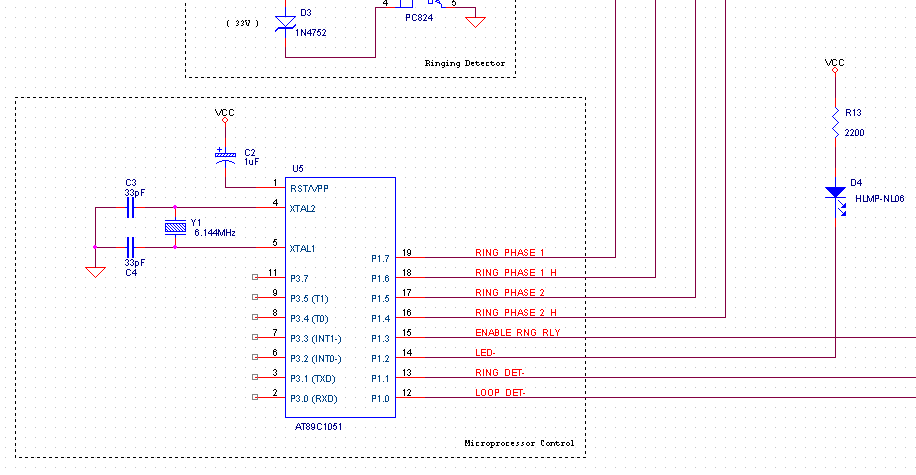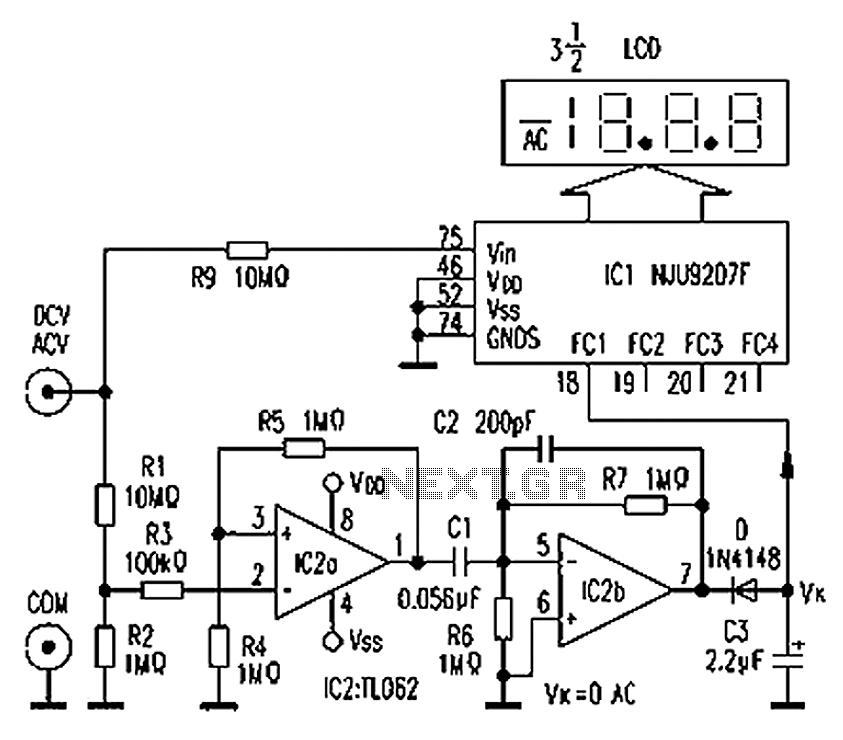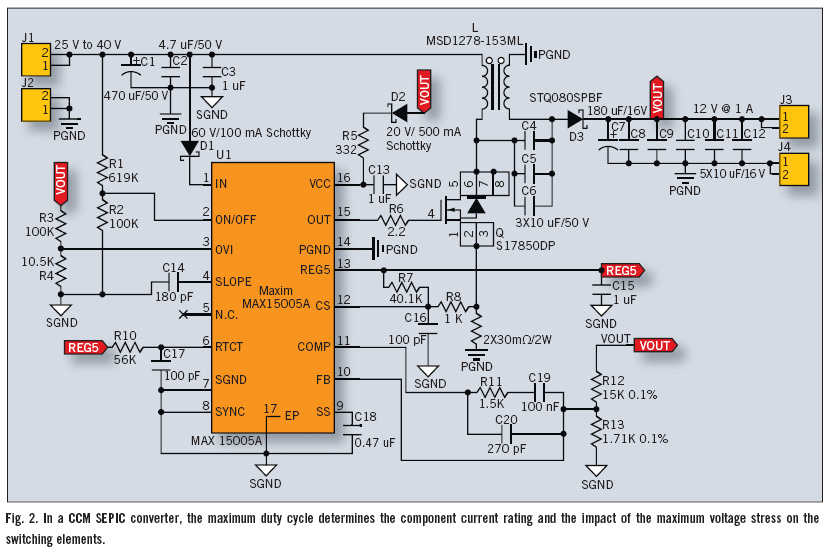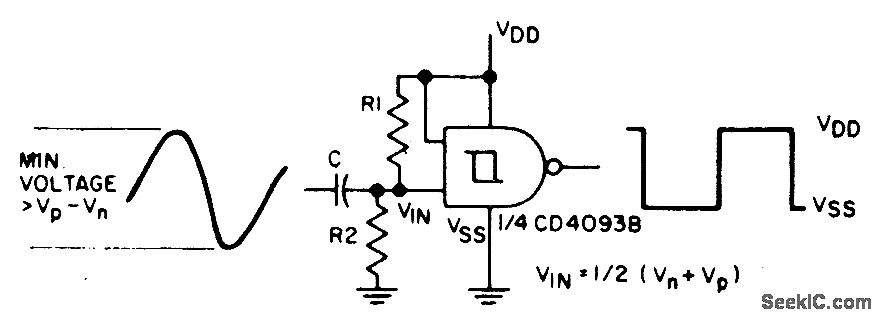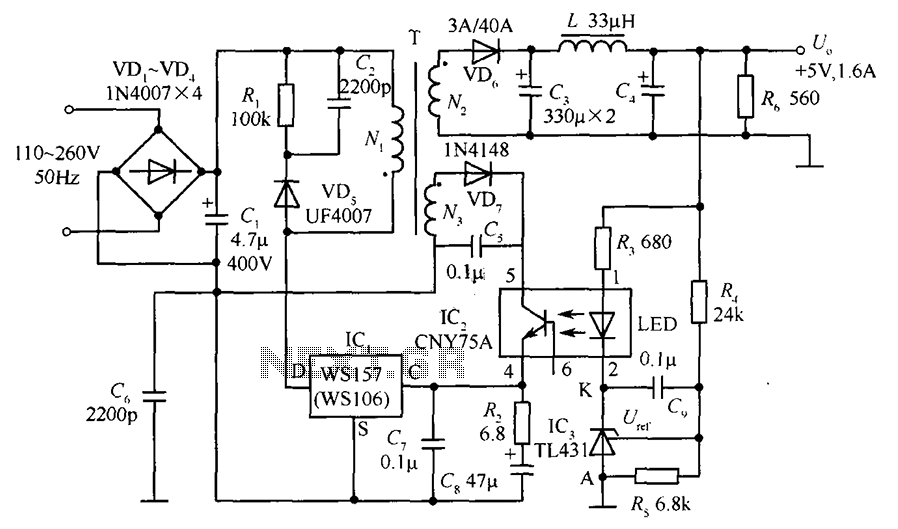
Precision voltage-to-frequency converter
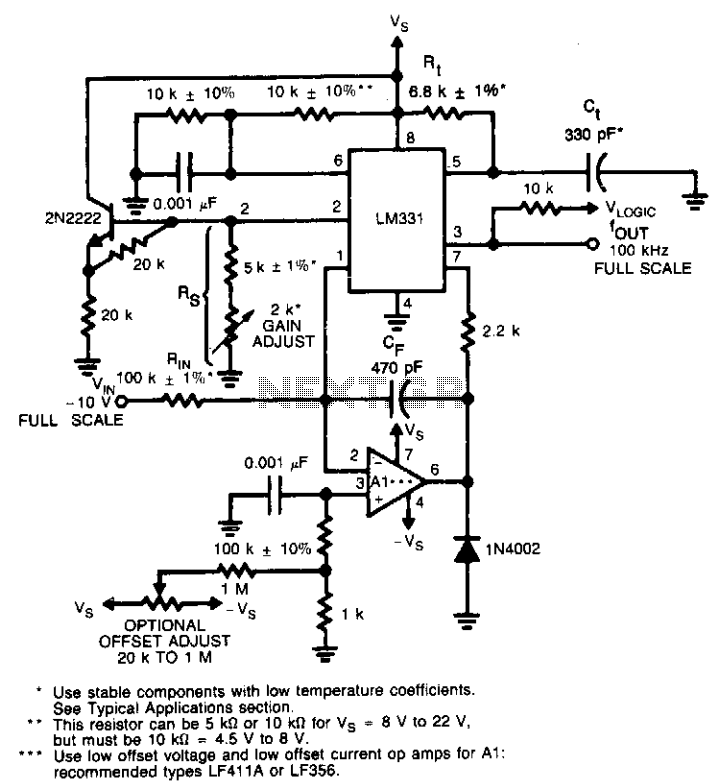
This circuit utilizes a conventional operational amplifier in conjunction with a feedback capacitor (CF) to perform integration. When the output of the integrator exceeds the nominal threshold level at pin 6 of the LM131, it triggers the timing cycle. The average current supplied to the summing point of the op-amp (pin 2) is calculated as (1.1 RtCt), which is balanced against -V^/R^. Unlike a stand-alone voltage-to-frequency (V-to-F) converter, the voltage offset of the LM131 input comparator does not impact the offset or accuracy of this V-to-F converter. Additionally, the bias current and offset current of the LM131 do not affect the performance. The primary limitations for accurate conversion of small signals are the offset voltage and offset current of the operational amplifier.
The circuit described employs an operational amplifier configured as an integrator, which is a common arrangement in analog signal processing. The feedback capacitor (CF) plays a crucial role in determining the integration time constant, influencing how quickly the circuit responds to changes in the input signal. The LM131, a precision voltage-to-frequency converter, is activated when the integrator output crosses a predetermined threshold. This threshold is set at pin 6, which is critical for initiating the timing cycle that translates the integrated voltage into a frequency output.
The average current flowing into the summing point of the op-amp (pin 2) is defined by the equation (1.1 RtCt), where Rt is the timing resistor and Ct is the timing capacitor. This current must be balanced against the negative voltage divided by the resistor (R^), ensuring that the integrator operates within its intended parameters. The design effectively mitigates the typical issues associated with voltage offsets found in standalone V-to-F converters, allowing for improved accuracy and stability in the output frequency.
The operational amplifier's offset voltage and current are the primary factors that limit the circuit's ability to accurately convert very small input signals. These parameters must be carefully considered during the design phase to ensure that the circuit can perform optimally across its intended range of operation. By minimizing these offsets through careful selection of components and circuit layout, enhanced performance and precision can be achieved in the voltage-to-frequency conversion process.In this circuit, integration is performed by using a conventional operational amplifier and feedback capacitor, CF. When the integrator's output crosses the nominal threshold level at pin 6 of the LM131, the timing cycle is initiated.
The average current fed into the op amp's summing point (pin 2) is (1.1 RtCt) which is perfectly balanced with - V^/R^. In this circuit, the voltage offset of the LM131 input comparator does not affect the offset or accuracy of the V-to-F converter as it does in the stand-alone V-to-F converter, nor does the LM131 bias current or offset current.
Instead, the offset voltage and offset current of the operational amplifier are the only limits on how small the signal can be accurately converted.
The circuit described employs an operational amplifier configured as an integrator, which is a common arrangement in analog signal processing. The feedback capacitor (CF) plays a crucial role in determining the integration time constant, influencing how quickly the circuit responds to changes in the input signal. The LM131, a precision voltage-to-frequency converter, is activated when the integrator output crosses a predetermined threshold. This threshold is set at pin 6, which is critical for initiating the timing cycle that translates the integrated voltage into a frequency output.
The average current flowing into the summing point of the op-amp (pin 2) is defined by the equation (1.1 RtCt), where Rt is the timing resistor and Ct is the timing capacitor. This current must be balanced against the negative voltage divided by the resistor (R^), ensuring that the integrator operates within its intended parameters. The design effectively mitigates the typical issues associated with voltage offsets found in standalone V-to-F converters, allowing for improved accuracy and stability in the output frequency.
The operational amplifier's offset voltage and current are the primary factors that limit the circuit's ability to accurately convert very small input signals. These parameters must be carefully considered during the design phase to ensure that the circuit can perform optimally across its intended range of operation. By minimizing these offsets through careful selection of components and circuit layout, enhanced performance and precision can be achieved in the voltage-to-frequency conversion process.In this circuit, integration is performed by using a conventional operational amplifier and feedback capacitor, CF. When the integrator's output crosses the nominal threshold level at pin 6 of the LM131, the timing cycle is initiated.
The average current fed into the op amp's summing point (pin 2) is (1.1 RtCt) which is perfectly balanced with - V^/R^. In this circuit, the voltage offset of the LM131 input comparator does not affect the offset or accuracy of the V-to-F converter as it does in the stand-alone V-to-F converter, nor does the LM131 bias current or offset current.
Instead, the offset voltage and offset current of the operational amplifier are the only limits on how small the signal can be accurately converted.
